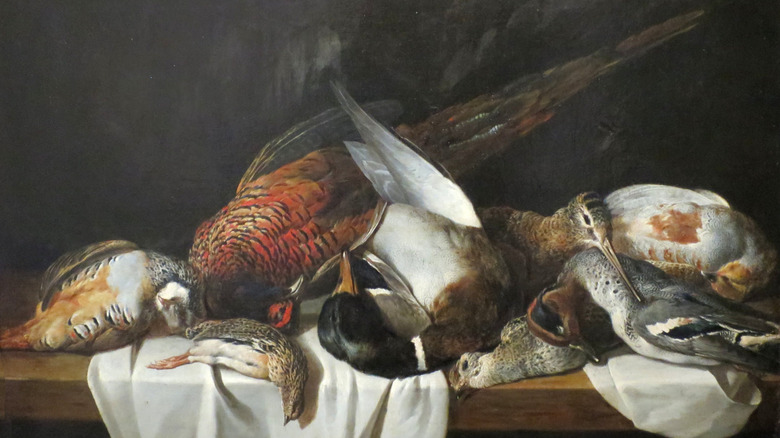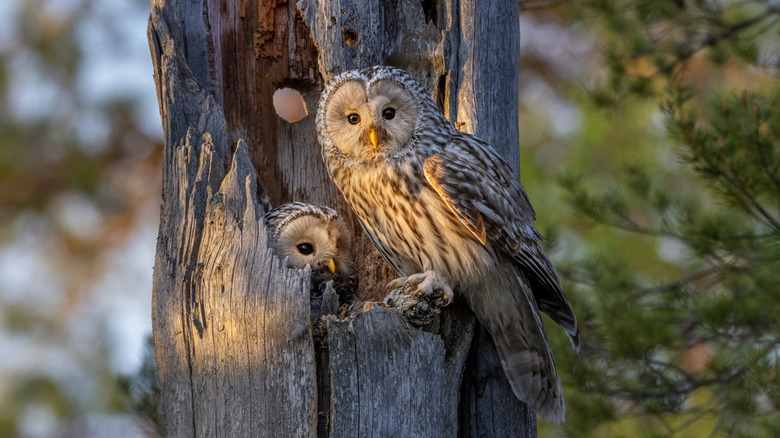The Majestic Birds Some Americans Used To Eat (Which Would Be A Crime Now)
While most Americans wouldn't consider eating owl, this distaste for the bird's meat wasn't always a given. Many Indigenous North American tribes like the Iroquois, Mi'kmaq, Han, and Kaska ate this bird out of necessity or enjoyment. For instance, the Han considered snowy owls a treat, but the Kaska seem to have eaten them mostly when other foods were scarce. At the same time, eating owl was taboo for members of the Chilcotin, Tlingit, Stalo, and other groups, usually because of respect or fear. Some groups considered them bad omens, spirits unable to rest, or shape shifters that took bird form to deceive people. Others conferred owls with guardian status or believed they were holders of ancient wisdom and should therefore be protected.
The practice may have continued among Indigenous people after colonization, but it wasn't too common in other groups — at least not by choice. A testimony by a formerly enslaved man named Victor Duhon in the "Federal Writers' Project: Slave Narrative Project" published at the Library of Congress reveals that victims of slavery ate owl, but mostly because enslavers considered this a lesser meat, along with raccoons and possums, and took the "better" meats for themselves.
Similarly, an 1894 Newspaper article from the Daily Herald claimed that Cajuns in Louisiana sometimes made owl gumbo soup, which they described as "palatable." This lukewarm description in a region including New Orleans, which is known for its tasty dishes, may mean that people added owl because they lacked other protein sources, much like people in the Great Depression ate water pie to get by, not because they liked it.
Owl as an exotic meat
Some accounts provide evidence of other people trying owl, but they denote curiosity rather than custom. Famed bird enthusiast John James Audubon, for example, described the snowy owl as "not indelicate eating" in his 1834 "Ornithological Biography." People have taken this to mean the bird was commonly found on dinner tables, but Audubon ate many birds — including bald eagles, hawks, and woodpeckers — as part of his research.
Charles Darwin also famously had members of his Glutton Club at Oxford try the bird, choosing it mainly because of its rarity. "The Market Assistant," an 1867 guide to food sold in Boston, Philadelphia, New York, and Brooklyn (which were separate cities at the time), mentions owl consumption under the section "Birds Which Are Seldom or Never Used Here as Human Food." The book does state that poachers sometimes bypassed hunting laws by selling sought-out birds like pheasant and partridge under the name of owls. This may be evidence that most people didn't care too much for eating the wide-eyed animals, but also that the practice was not completely unheard of in the 19th century.
There's no evidence of owl eating within the United States during the 20th century. Perhaps changes in the diet of Indigenous groups, the end of slavery, and the improvement of food security eventually led to owls completely disappearing from our dinner tables. In any case, they were added to the 1972 Amendment to the Migratory Bird Treaty Act and are now protected from harm.

